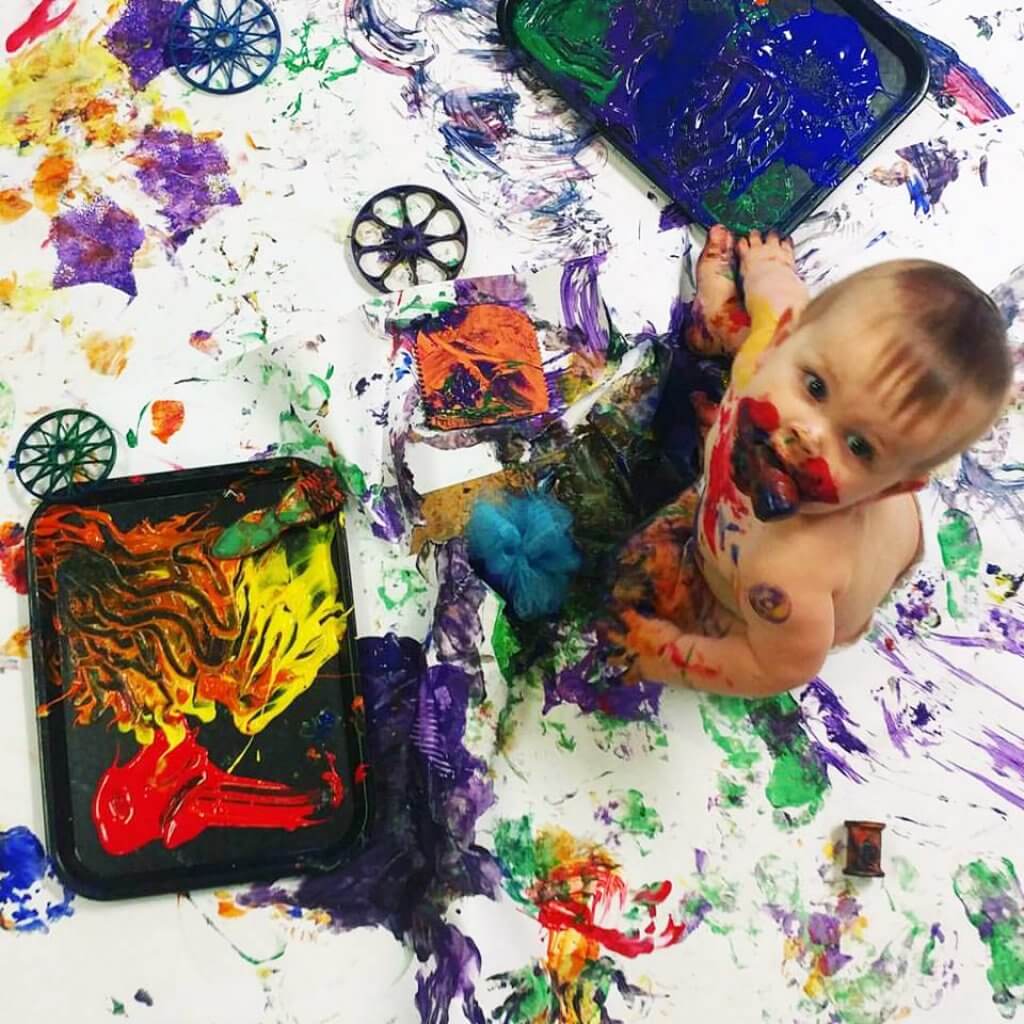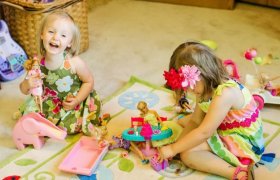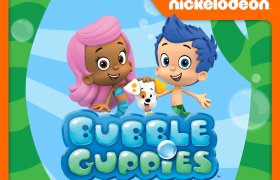Cultivating a Positive Attitude With Your Child

Remember the days of pretending the jungle gym was a pirate ship or how about the time when your living room floor was lava so you had to jump from couch to couch to survive? Imagination is the magic of childhood.
Not only does it provide great memories and wild adventures but it is also crucial to your child’s development. It helps them discover themselves as well as the world around them.
As they engage in pretend play they will be stimulating their cognitive development and social skills. Their creativity will instill confidence in them. As a parent, you’re hoping your child will grow up and live a successful life. Growing their imagination and teaching them how to be positive now, will help put them on the path to success. Don’t start feeling overwhelmed. We simplified the process.
First we’ll discuss how to develop your child’s imagination and then we’ll give you some pointers on how to keep it positive. Here are 5 ways you can help grow and develop imagination in your child.
Play outside

Mother nature is the perfect place to allow your child’s imagination run wild. The opportunities for them to think, discover, and create are endless. They can stimulate all fives sense as they take in the world around them.
Their imagination will be at work as they use sticks to draw in the mud, engage in social play on the playground, or even while they down and stare up at the clouds. The outdoors does not confine or restrict their minds in any way. Furthermore, playing outside will help them to de stress thus creating a positive mindset while they play.
Open ended toys
It is important for your child to have plenty of open ended toys. These are toys that require them to do more than just press a button, pull a string, or simply watch a screen. Sitting in front of the TV shows your child other peoples ideas, instead of allowing them to create their own. Open ended toys allow your child to imagine and create their own way to play. Blocks, puppets, doll houses are all great examples of open ended toys. The more simple the toy is the better. Especially when the toy can be used in more than one way. Your child will get creative and develop their problem solving skills as their imagination grows.
Tell Stories
Reading stories is a great way to bond with your child. You might have done it while they were in your womb, or maybe you read them a story next to their crib and watched drift away into a deep sleep. At first your child will just enjoy hearing the sound of your voice, but as they grow older they will be able to understand these stories. They’ll use their imagination to imagine the characters and lands you speak of.
When you’re intimidated by the idea of coming up with stories on your own you can read stories instead. Picture books are a great tool in helping you come up with stories because you create a story around each picture. Reading children’s books also helps develop their imagination. Reading or telling stories with your child for at least thirty minutes a day will develop a creative and imaginative mind in them.
Getting Creative can be Messy

The creative process can be a messy one, but be okay with it! We’re not saying to let your child run through the house with a dripping wet paint brush, we’re just saying it will be okay if there are crayons spread out all over the table with tons of coloring sheets. Get crafty with your child.
Paint, color, sculpt, or even draw with sidewalk chalk. There are tons of different medias your child can work with to create art. Whatever media they choose, allow them to have complete freedom. If they want to draw a purple tree, don’t tell them trees are only brown and green. Their hands are busy creating what their minds have imagined. Their works of art serve as a window, for you, to their imagination. Sit back, relax and enjoy seeing what beautiful pieces they create.
Play Dress up
The next time your child asks you to join their tea party or to lie back so they can operate on you with their plastic stethoscope,embrace it! Playing dress up allows your child to be creative as they come up with new and interesting adventures. Depending on the dress up clothes you own, it may even foster a passion for a successful career in the future.
Play with them to increase their social skills and to develop more complex stories. Allow your child to be the leader, and go wherever the story takes you. If you don’t have any dress clothes, try your local thrift stores. They offer tons of unique pieces at affordable prices and your child is sure to have a blast.
Keeping it Positive Once Established
At around age 5, your child will start to grasp the concept of positive thinking. They’ll move on from associating feeling happy with simple things like a trip to the ice cream shop and begin to understand that their thoughts will affect how they feel. It is important that you aid in developing their positive mindset as it will make them more resilient. Optimistic children are less likely to become depressed when life throws them disappointments. Here are a few ways you can help develop positivity in your child.
Monkey See, Monkey Do

Your child looks up to you, so model positivity. When your child begins to feel anxious or sad, help to retrain their thoughts. Maybe your child is worried about lunchtime at their new school.
Instead of dwelling on the bad, say things like “Let’s talk about all the good things that can happen at school and at lunch. If you only worry about the bad stuff, it won’t help you feel better.” As positivity develops in their mindset, it will leak over to their imaginative play.
Don’t brush the bad stuff under the rug
When trying to model positivity, it may be easier to just sweep the problems under the rug. However, being a positive thinker also means acknowledging the bad. For instance, if your child gets a bad grade on a test you can model positive thinking by saying, “I know you’re disappointed in receiving that grade. Instead of dwelling on the bad grade, let’s talk about what we can do to get a better one next time.” You are helping your child retrain their negative thoughts into positive ones.
Positive Environment
Keep your home a positive place. Watch funny movies, tell jokes, and include funny scenarios in pretend play. Provide your child with affection. Kind words, hugs, and even high fives will help stimulate their positive mindset.
Encourage them when they discover a hobby they love. If they love to create art, let them know their creation is beautiful. Your encouraging words will also help build their confidence. With high confidence levels it will keep them from thinking negative thoughts about themselves.







